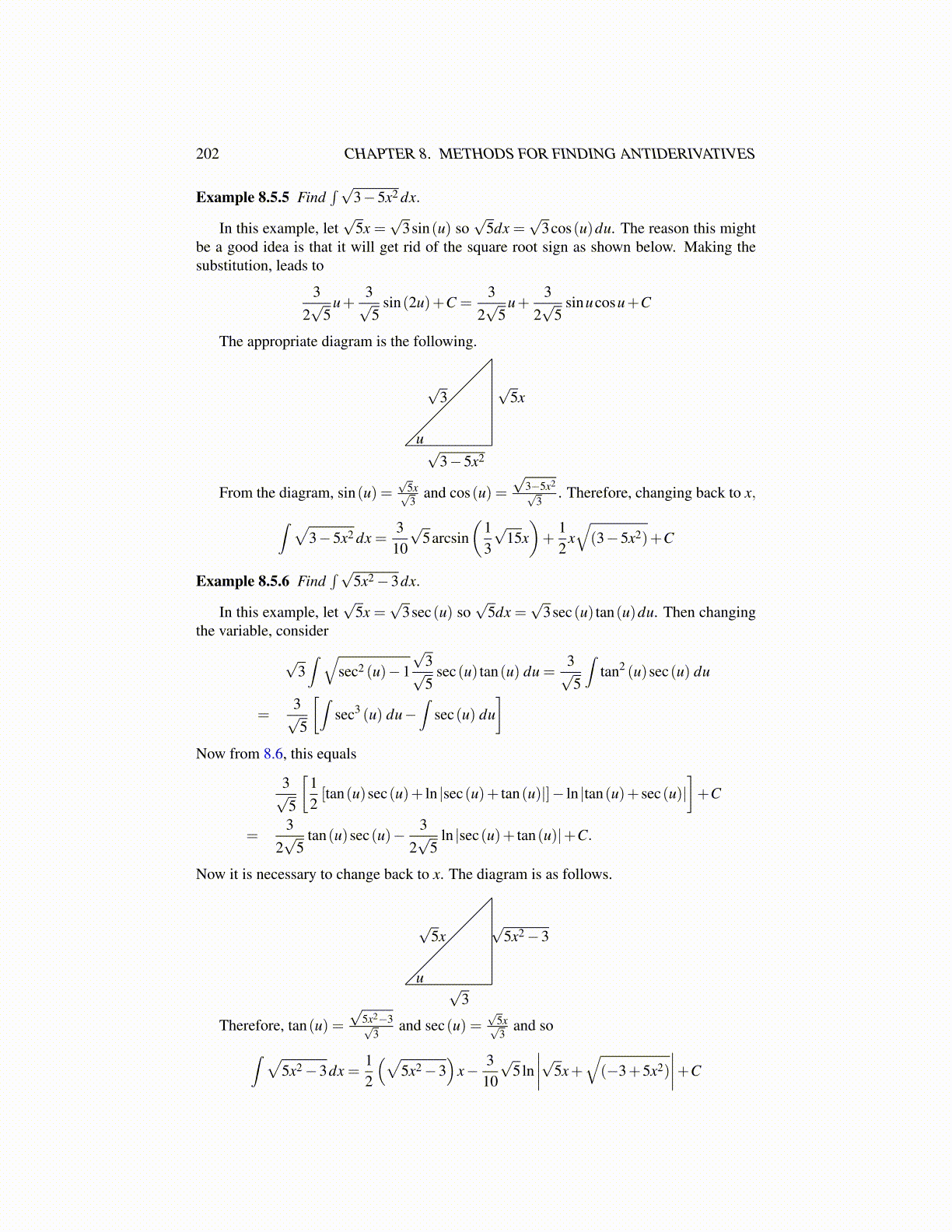
202 CHAPTER 8. METHODS FOR FINDING ANTIDERIVATIVES
Example 8.5.5 Find∫ √
3−5x2 dx.
In this example, let√
5x =√
3sin(u) so√
5dx =√
3cos(u)du. The reason this mightbe a good idea is that it will get rid of the square root sign as shown below. Making thesubstitution, leads to
32√
5u+
3√5
sin(2u)+C =3
2√
5u+
32√
5sinucosu+C
The appropriate diagram is the following.
√5x
√3−5x2
√3
u
From the diagram, sin(u) =√
5x√3
and cos(u) =√
3−5x2√
3. Therefore, changing back to x,∫ √
3−5x2 dx =310
√5arcsin
(13
√15x)+
12
x√(3−5x2)+C
Example 8.5.6 Find∫ √
5x2 −3dx.
In this example, let√
5x =√
3sec(u) so√
5dx =√
3sec(u) tan(u)du. Then changingthe variable, consider
√3∫ √
sec2 (u)−1
√3√5
sec(u) tan(u) du =3√5
∫tan2 (u)sec(u) du
=3√5
[∫sec3 (u) du−
∫sec(u) du
]Now from 8.6, this equals
3√5
[12[tan(u)sec(u)+ ln |sec(u)+ tan(u)|]− ln |tan(u)+ sec(u)|
]+C
=3
2√
5tan(u)sec(u)− 3
2√
5ln |sec(u)+ tan(u)|+C.
Now it is necessary to change back to x. The diagram is as follows.
√5x2 −3
√3
√5x
u
Therefore, tan(u) =√
5x2−3√3
and sec(u) =√
5x√3
and so∫ √5x2 −3dx =
12
(√5x2 −3
)x− 3
10
√5ln∣∣∣∣√5x+
√(−3+5x2)
∣∣∣∣+C